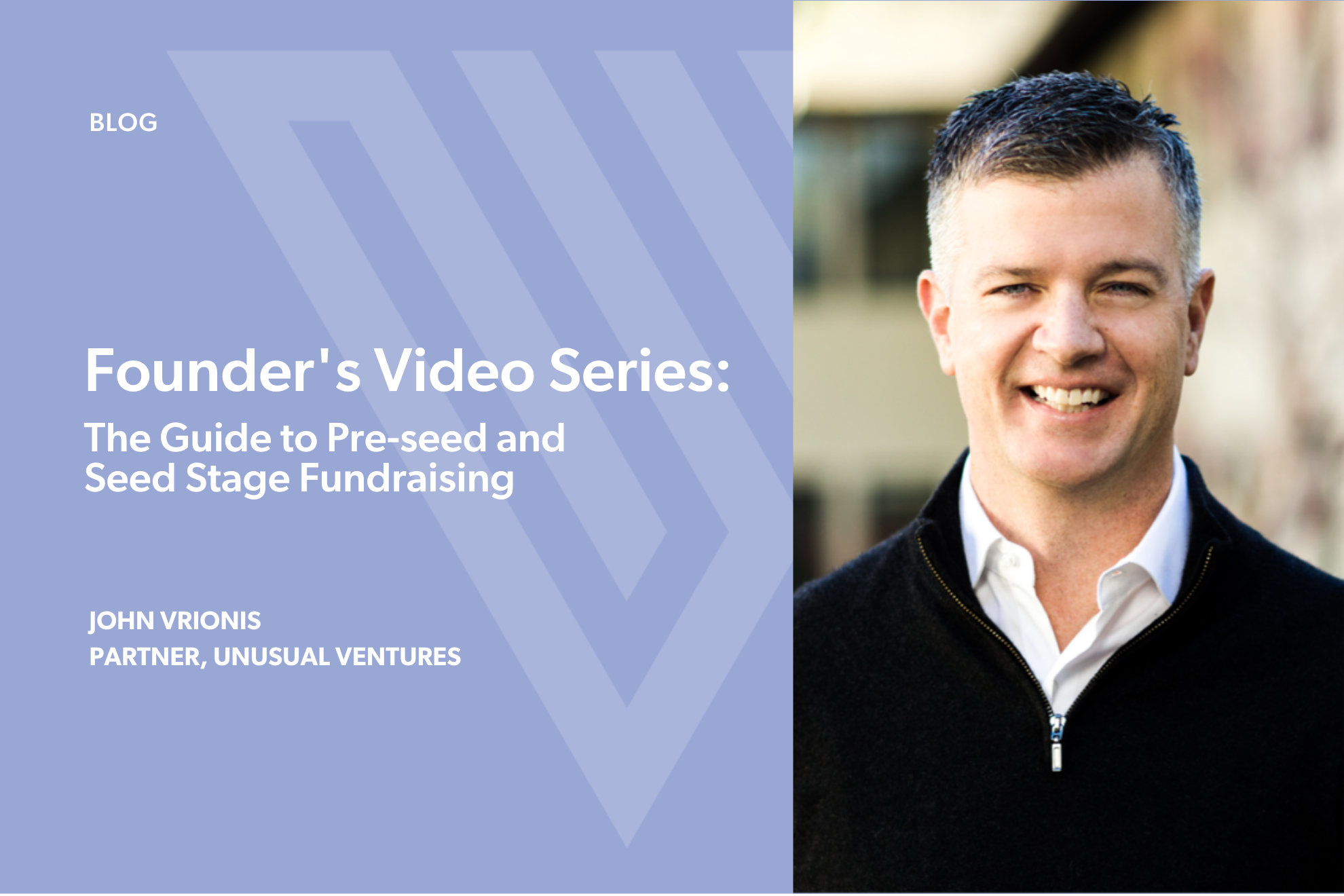

Great insights are what Silicon Valley is built around. Every aspiring entrepreneur dreams of turning their great idea into an iconic success. While ideas are the foundation of every great company, they’re only the first step on a long road to realizing that dream.
The first piece in our three-part series was a broad overview of fundraising and the valuation step function. We discussed how founders should orient fundraising around a set of milestones for each phase of the journey. At Unusual Ventures we encourage early-stage founders to set goals around three key milestones: team, product, and traction.
Now, let’s examine fundraising at the pre-seed and seed stages, specifically what those three key milestones look like at each stage.
As founders look to raise a pre-seed round, they need to think about the basic building blocks that will help them turn their idea into a business. Here’s how we at Unusual Ventures recommend they approach each milestone during that time:
TEAM: Bring on co-founders and a team of core engineers to start building v1.0 of the product. Consider adding a resource to help with outreach to prospective users to insure you have enough conversations – this could be a full-time or part-time hire.
PRODUCT: Start with mockups to use in conversations with prospective users and buyers, and transition to a working prototype with validation.
TRACTION: Set a goal of between 50 and 100 conversations with possible users. Once you’ve iterated to a clear use case 1.0 of the product move to collaboration with committed design partners (we suggest a minimum of 3 and a maximum of 5).
To summarize, your initial Team, Product and Traction goals should be: 1) put your founding team in place, 2) work towards a completed prototype, and 3) validation of a use case and ideal user profile with committed design partners. Accomplishing all three means you’ve taken a major step towards creating value in your company.
Many startups today raise a pre-seed round and then a seed round before raising a larger Series A. There’s no “right” path as every situation is unique. If your path as a founder is to raise a pre-seed round and then a seed round, you will want to make it clear in your conversations with prospective Seed investors that these are your goals to accomplish during the seed phase prior to raising a Series A.
TEAM: Extend the team beyond the co-founders and handful of initial hires by adding additional engineers, a first sales person and someone to own product marketing.
PRODUCT: Advance from a mockup or prototype to at least a beta version but ideally you’d have something that you can say with a straight face is production worthy.
TRACTION: Metrics to suggest you have achieved early signs of product market fit. As we’ve noted previously this can be either through “thousands of users” and/or approximately $1M of Annual Recurring Revenue (ARR).
Thank you for learning more about our Unusual approach to early stage company building. Once you’re ready for more resources like this, sign up for our newsletter to get a monthly deep dive into events, guides, and opportunities for early-stage founders.
Onward!
P.S. After you’ve watched these videos, we’d love to get your feedback on anything but our COVID hair (for that we appreciate your compassion!) Please tell us what you think by filling out this brief survey.